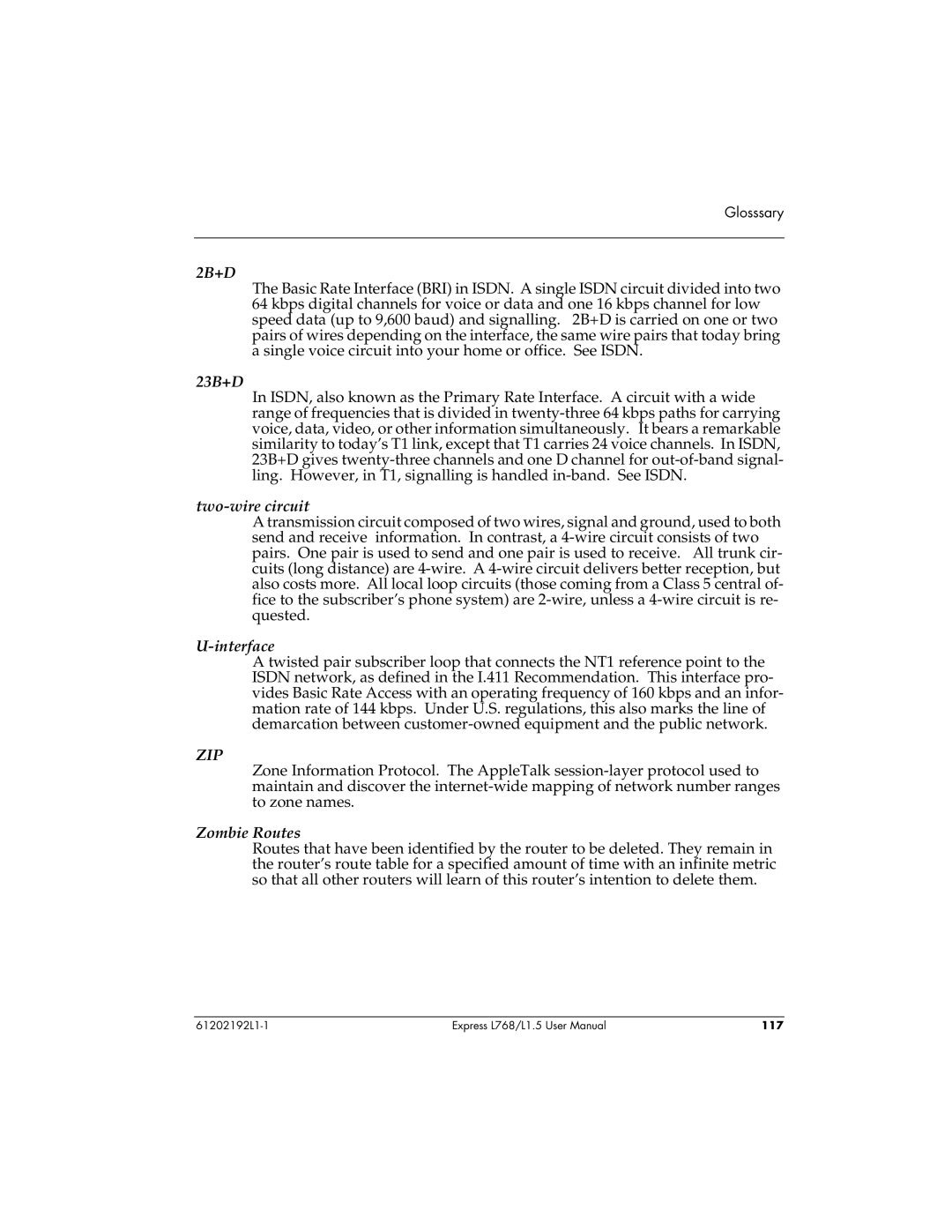
Glosssary
2B+D
The Basic Rate Interface (BRI) in ISDN. A single ISDN circuit divided into two 64 kbps digital channels for voice or data and one 16 kbps channel for low speed data (up to 9,600 baud) and signalling. 2B+D is carried on one or two pairs of wires depending on the interface, the same wire pairs that today bring a single voice circuit into your home or office. See ISDN.
23B+D
In ISDN, also known as the Primary Rate Interface. A circuit with a wide range of frequencies that is divided in
two-wire circuit
A transmission circuit composed of two wires, signal and ground, used to both send and receive information. In contrast, a
U-interface
A twisted pair subscriber loop that connects the NT1 reference point to the ISDN network, as defined in the I.411 Recommendation. This interface pro- vides Basic Rate Access with an operating frequency of 160 kbps and an infor- mation rate of 144 kbps. Under U.S. regulations, this also marks the line of demarcation between
ZIP
Zone Information Protocol. The AppleTalk
Zombie Routes
Routes that have been identified by the router to be deleted. They remain in the router’s route table for a specified amount of time with an infinite metric so that all other routers will learn of this router’s intention to delete them.
Express L768/L1.5 User Manual | 117 |
